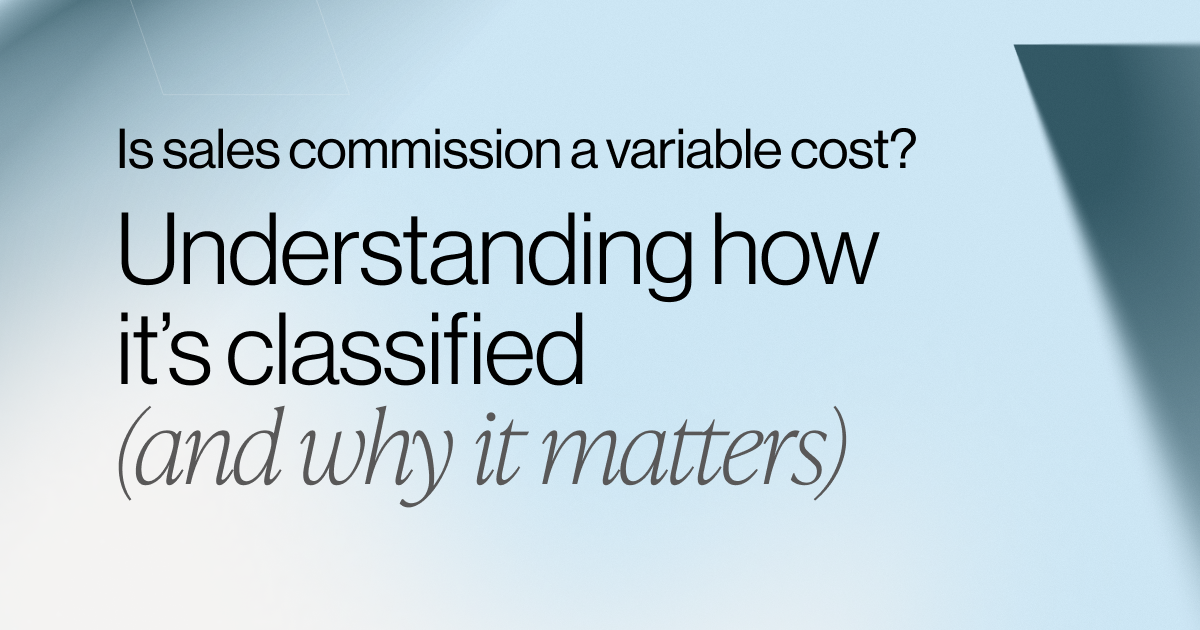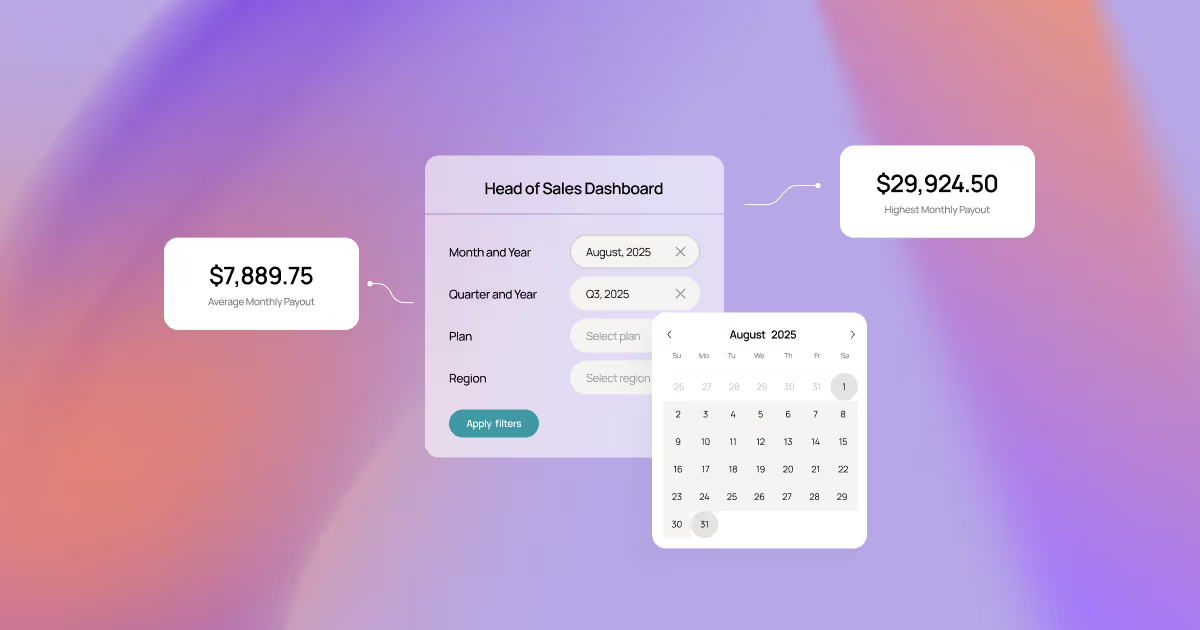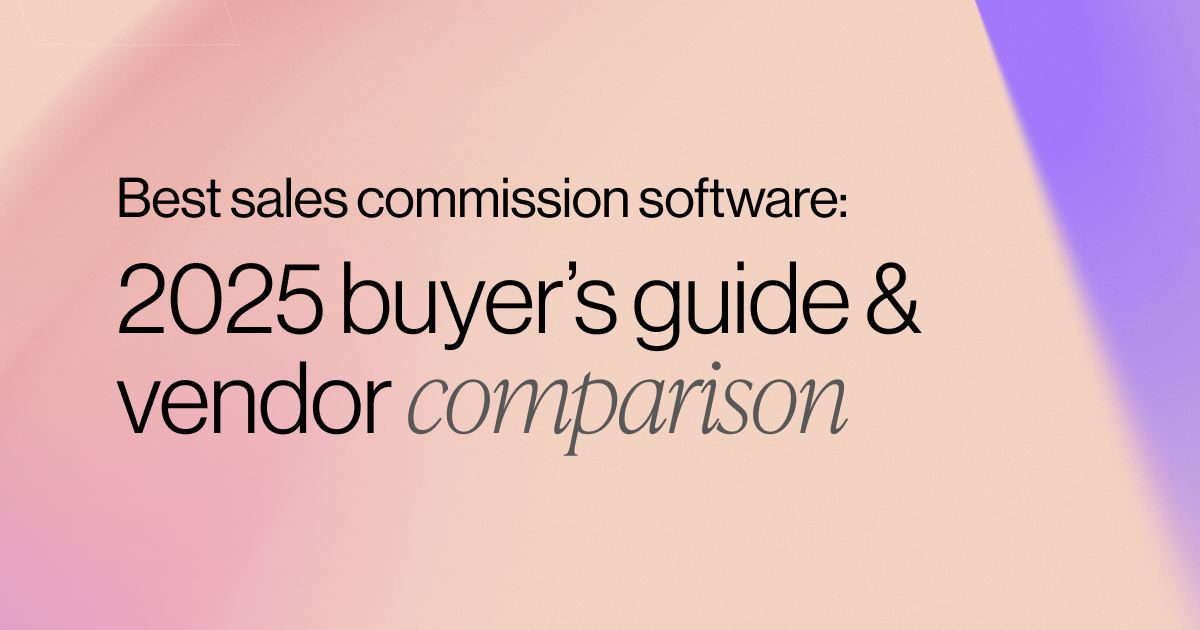What is Incentive Pay: Types of Incentive Pay Programs
Wake up. Work. Get paid. Repeat.
Okay. It’s not that simple – a lot of life happens between hard work. However, for most people, work is an important part of life, and they want to feel like their work matters.
In other words: when people work, they want to get paid! A financial reward increases the sense of accomplishment and validation — and can massively improve performance and job satisfaction.
Moreso, a healthy work environment means your employees know what to expect, how to expect it, and when they will receive it. Clear communication about basic pay plays an essential role in driving business performance and overall employee satisfaction.
... Cognitive satisfaction is derived from the evaluative appreciation of work-related aspects, such as payment, schedules and benefits (Eyupoglu et al., 2016).
“Payment,” or compensation, is quite a broad term that takes many forms. Employees and employers must understand the various types of compensation and how they apply it to their particular situations.
In this blog post, we'll:
- Define incentive pay;
- Look at the most common incentive plans and incentive pay programs;
- Review the pros and cons of incentive pay systems.
But first, let’s start with some comparisons.
What is compensation? What is incentive pay?
Compensation generally refers to the payment received by an employee in the form of salary, benefits, wages, or variable pay.
Compensation is typically given as monetary payment in exchange for time, labor, and expertise —whether you're a salaried or hourly employee.
Now that we've identified basic pay: what is the definition of incentive pay?
Incentive pay is a variable form of compensation. An incentive structure is a merit-based compensation awarded outside guaranteed hourly or salary wages. The eligibility criterion is directly tied to achieving performance goals, objectives, or milestones.
Incentive pay is a type of compensation that offers employees extra motivation to achieve specific goals.
Incentive pay can be:
- Casual or structured: Casual incentives are distributed irregularly, not within a fixed schedule. In contrast, structured incentives are part of an established incentive plan.
- Monetary or non-monetary: Monetary incentive pay examples include commissions, quarterly or yearly bonuses, stock shares, and sign-on bonuses. Non-monetary incentive examples are items or time such as recognition awards, special meals or events, travel rewards, gym memberships, tuition reimbursement, and employee referral bonuses.
It’s also worth noting that the type and size of the reward can depend on performance metrics, such as:
- Deals completed;
- Sales target;
- Units sold;
- Customer acquisition cost;
- And so on.
Pro tip: It's always worth checking what incentives are available in the compensation plan before you start working for a company!
The bottom line is that incentive pay is an essential part of overall compensation and can be used to encourage desired behaviors or results.
There are many different types of incentive pay, each with its own benefits and drawbacks (more on this later).
Generous and specific financial incentives can help drive and sustain a rapid performance improvement ... companies that implemented financial incentives tied directly to transformation outcomes achieved almost a fivefold increase in total shareholder returns (TSR) compared with companies without similar programs. (Source)
What are the differences between incentive pay and a bonus?
Again, incentive pay is a merit-based compensation awarded outside guaranteed hourly or salary wages directly tied to achieving performance goals, objectives, or milestones.
The benchmarks of merit pay are typically known ahead of time. We're asked to achieve specific goals in order to receive incentive pay.
Incentive pay is something employees can work towards as it's clearly defined in a compensation plan based on specific performance metrics and objectives.
If you can achieve the productivity goal, you're guaranteed to get special pay.
Bonus pay, or performance bonus, is a form of incentive pay consisting of a one-time payment.
This one lump sum payment level is typically awarded at year-end (the holiday season on most business calendars).
However, an employee bonus can also apply during the course of employment as employees reach certain milestones, such as hitting quarterly sales targets by specific dates. This cash bonus would then be a part of the incentive pay plan.
Bonuses are often based on a department or the entire organization reaching a particular business objective.
Some common monetary incentive bonus examples include:
- Spot bonus: Small cash prizes awarded in direct, immediate responses to positive employee performance.
- Project bonus: Additional pay given after a project is completed.
- Performance bonus: A cash bonus rewarding individual employee success.
- Referral bonus: An individual bonus issued to employees who connect new businesses or bring new employees to the company.
Examples of incentive pay plans
There are several ways to implement incentive payment plans.
As we mentioned before, incentive programs can be casual or structured. Within these categories, there are several types of incentive programs with different benchmarks, payment levels, and eligibility criterion.
With several types incentive programs to choose from, we have the flexibility we need to hit business objectives in a way that aligns with company values.
The following incentive pay examples can be used individually or combined – depending on what works best for your organization.
- Merit pay bonus: Employees receive a one-time $1,000 bonus payment based on their exceptional work ethic and contribution to the company's success in the previous fiscal year. Note: This special pay can also come in the form of a group bonus, which would establish a set of eligibility criterion (including pre-established goals or business objectives by a designated time) that employees must meet to qualify. The employee bonus could then be divided among all qualifying employees, regardless of their position within the company. This group incentive motivates employees to work toward a common goal, rewarding employees who contribute the most to the company's success!
- Sales commission: A salesperson is paid a monthly commission of 3% on all sales generated over the period. Typically, the commission is earned after the salesperson meets or exceeds a certain sales target.
- Gainsharing: A sales rep gets financial shares (equity) based on business success tied directly to exceptional performance. Note: Profit sharing is quite similar to gainsharing, but instead of individual performance driving the payout, profit sharing is based on the company's overall profitability.
- Retention bonus: Awarded to an employee based on tenure with the organization – the amount is most often calculated as a percentage base pay to encourage employee retention.
- Spot awards or SPIFFs (aka, Sales Performance Incentive Fund): These are small , sometimes non-monetary, incentives — event tickets, gift cards, etc. — given to sales reps for some short-term performance metrics as motivation to achieve their goals.
- Employee of the month: An individual employee is awarded a $100 gift card every month as part of a recognition program. After three consecutive months, the employee is given an additional $500 bonus. You often see this incentive program in small businesses with hourly employees, but its useful in any business strategy.
- Overtime pay rate: An employee works more than 40 hours in a week and earns 1.5x their regular pay rate for all hours worked over the threshold of 40. This is of course tied directly to businesses with hourly employees, like a retail store.
Remember, this is a partial list. There are many different types of incentive pay plans that support different business needs, commission structures, and company cultures.
Make sure to do your research before deciding which one is right for your business strategy!
How is incentive pay calculated?
Incentive pay is calculated in various ways depending on the compensation structure.
A straightforward way to calculate special pay is by awarding a percentage of the employee's base salary as incentive pay. This is often how sales incentive programs calculate commissions.
For example, if an employee has a base salary of $50,000 and is awarded a 5% incentive pay bonus, they would receive an additional $2,500 in addition to their base salary.
Some employers also offer incentive pay as a flat dollar amount or a number of days' pay.
Another factor that may affect incentive payouts is how well the employee performs.
For example, if an employee exceeds a set goal, they may be eligible for a higher incentive payout than someone who meets expectations but does not exceed them.
In this case, businesses might use a points system, where employees earn points for meeting or exceeding goals. Other companies may use a percentage-of-profits system, where employees are paid a percentage of the profits made from their hard work.
What Charlie Munger taught us about the benefits of incentive pay
Charlie Munger is an American businessman, former real estate attorney, and billionaire investor. He is vice chairman of Berkshire Hathaway (you know, Warren Buffett’s company).
He knows a thing or two about the benefits of incentive pay and behavioral economics.
In The Psychology of Human Misjudgment, a 1995 speech he gave to an audience at Harvard University, Mr. Munger shared a powerful incentive story about the Xerox company.
Former Xerox CEO and President Joe Wilson needed help understanding why the far superior model Xerox copier was not selling well compared to their older model.
He discovered the incentive pay program agreement – commission for sales of the older model – was a much greater motivation for the sales team than the commission agreement for the newer model.
As a result, the sales team was incentivized to sell the older model.
The psychology of positive reinforcement (incentives) in practice – impacting sales directly.
As Charlie Munger shared, "Never, ever, think about something else when you should be thinking about the power of incentives.”
The benefits of incentives for employees are undeniable.
The most impactful employee incentive pay benefits include a(n)
- Way to properly motivate employee performance and increase productivity.
- Boost to employee morale, job satisfaction, and employee retention.
- Encourage high performance and exceptional customer service.
- Establish quality benchmarks to foster a productive and collaborative company culture.
The pros and cons of incentives
Like with any program, incentive plans have advantages and disadvantages.
It’s worth reinforcing that psychology plays a role in the success or failure of an incentive program.
In many ways, an incentive structure is rooted in operant conditioning based on B.F. Skinner’s research showing rewarded behavior becomes repetitive behavior.
People work harder and more effectively when knowing their extra efforts will result in a financial reward.
Financial reward is an obvious advantage for employees, but what are the benefits of an incentive payout outside of monetary rewards?
Benefits of incentive pay programs
The advantages of incentives include:
Competition and gamification
Fostering healthy competition among employees (for example, encouraging sales staff to increase sales) and leaning into the “gaming” concept of incentives to reach productivity goals.
Goal clarification
Incentive programs help companies more clearly define goals and establish quality benchmarks, empowering employees to earn more money and participate in the recognition program.
Increased employee satisfaction and retention rates
Structured or casual incentives boost morale and improve job performance, leading to happier employees who hang around longer.
Challenges of incentive pay plans
There are a few disadvantages of incentive pay to keep in mind.
For example: Beware of employees using unethical practices to make their performance appear to meet performance metrics or total sales goals when they don’t.
Here are some other disadvantages to keep in mind when putting together your incentive structure, and how to prevent them.
Unhealthy competition
Creating a "zero-sum" mentality, where employees focus on taking money away from one another rather than working together for the common good.
Similarly, promoting competition over cooperation can lead to unhealthy rivalry, unethical practices, and sabotage among coworkers.
You can avoid this by incorporating group incentives to encourage goal alignment, as well as a recognition program that rewards collaboration, support, and teamwork.
Creating an atmosphere of fear and mistrust
The goal of any sales incentive program is to improve job performance by rewarding hard work.
But some company's can inadvertently punish employees who fall short or just meet benchmarks.
This can lead to employees putting in an exorbitant number of hours, or not feeling safe working with coworkers or asking leadership for help.
Quickly you might see a negative impact on employee morale, leading to burnout.
A great way to prevent this is to be firm in your company values. Encourage behavior principles that ensure your managers can provide feedback and offer support rather than cause fear of retribution or job loss.
Creating a false sense of mistreatment
Employees may feel they are not being paid fairly unless they receive incentive pay. This can lead to frustration and even reduce efficient production.
There are two ways to manage this. First, make sure you clearly document and publish your structure incentives to the entire company. Clearly outline the overarching organizational objectives and performance metrics that warrant success.
Another way to clearly demonstrate whether incentive pay is earned is to include routine performance reviews to monitor goal alignment and work quality. Leadership should be able to provide regular updates about how the employee's job performance is tracking against performance metrics.
By now, you know the advantages of incentive programs far outweigh the disadvantages.
Tip: When designing an effective program, consider benchmarks, test “early and often,” and have a communication plan. The incentive program should help drive a culture of high performance, not take away from it!
From incentive pay to Incentive Compensation Management (ICM)
Incentive pay can be an effective way to motivate employees and improve organizational performance. However, it is essential to carefully manage incentive compensation programs. Otherwise, they can become costly and lead to an atmosphere of distrust and conflict.
Ready to take control over your incentive compensation management?
CaptivateIQ enables sales, finance, and operations teams to design, deploy, and adapt incentive compensation plans. Our ICM software can easily handle the complexities of crediting and compensation rules while quickly processing large amounts of data — the result: operational efficiencies. Spend more time on the big picture and less time on the minutia!
Note: This content is for informational purposes only and should not be construed as financial, accounting, tax, legal, or compliance advice or guidance. Please consult a professional adviser for guidance on your specific situation.
.svg)








